You have no items in your shopping cart.
Post Requirement
Marble flooring is very popular in both commercial and residential buildings. It is an extravagant natural stone which has been used for a very long time now. The Taj Mahal which is one of the Seven Wonders of the World is an ivory-white marble mausoleum. Each marble stone has a distinctive quality to it that gives it an original appearance. In homes, it is used for kitchen countertops, flooring, etc. There are both pros and cons for choosing marble that every homebuyer should know before getting it installed as flooring. Here are some properties of marble you should be knowing.
Advantages
Solitary appearance
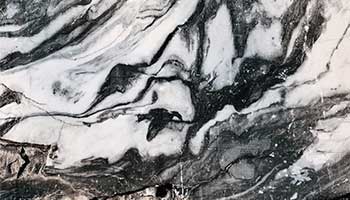
Marble is a natural stone, therefore every piece that is manufactured has a one-off appearance. There would be no other similar pieces anywhere else in the entire world. When it is a solid coloured marble stone, the difference in colour and shades is subtle but it will still stand out. For multi-coloured marbles, the shades and patterns are more pronounced and can be seen in every tile.
Environmental-friendly

Marble stone is a product of the earth, therefore there is no harm caused to the environment during its production. Even its look can bring the essence of nature’s beauty inside a house. It is a charming addition and it has a potent effect on any room.
Wide range of colours
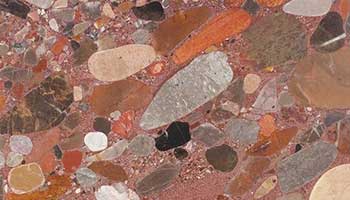
Marble has a visually appealing look to it that can instantly brighten up a room. It is available in so many diverse shades of colours, both solid and multi-coloured patterns. Including flexible colour options, it is also available in different shapes and sizes that can be put together to create beautiful mosaic creations.
Glassy effect
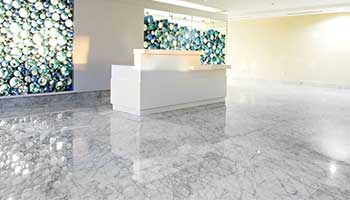
Marbles have a naturally translucent effect that, when lit up properly can even produce a glowing effect. This is because when light hits the marble stone, it is slightly penetrated. For many centuries, sculptors and artists have cherished this property of marble that allows it to illuminate. It is much more apparent when the colour of the marble is lightly shade or white.
As a conductor of heat

Marble can be used with heating systems that are placed below the flooring surface. They are resistant to hot pans and pots and are often used as countertops in kitchens. They have reasonable resistance towards temperature and will not get damaged upto an extent. Marble exposed to heat will keep the surface warm.
Easy to polish
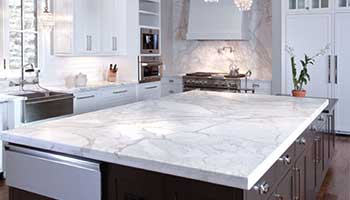
When maintained properly, marble can give a shimmering look. Unlike most natural stones, marble has an elegance that matches no other material and can easily bring a tasteful modern look to any building.
Disadvantages of Marble
Porous nature
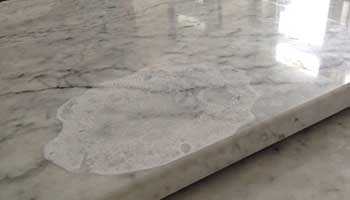
Marble is susceptible to damage from water penetration since it is a porous material. Therefore, any spilt material can be detrimental to the surface of the stone. However, damage control can be done by using a chemical sealer on the surface right after installing these tiles. For best results, this sealer should be reapplied at least once a year.
Fragile
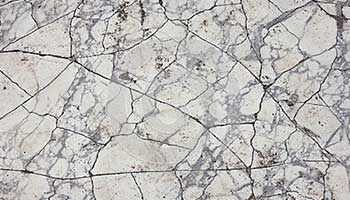
Marble tiles are susceptible to cracking, breaking and chipping. Installation of floor tiles must be done properly to ensure that there are no gaps between the marble and floor. Weak spots are liable to cracking even under normal pressure. Unfortunately, marble is also susceptible to scratch marks which can be easily visible especially on a smooth and flat surface. It is difficult to get rid of these marks without damaging the material surface. Marble countertops in kitchens should be used with special means to prevent the surface from damage.
Slippery surface

After polishing the surface, marble tends to be very slick. This can be dangerous as in areas such as kitchens and bathrooms, there is a high chance of the floor coming in contact with water. It is advised to use a carpet or opt for lesser polished marble tiles to avoid mishaps.
Expensive

Marble tiles can be expensive as they are considered to be a prime architectural element of building design. Marble tiles are not as hard as other natural stones such as granite, slate, etc. A considerable amount must be spent to maintain it regularly after installation.
Stains easily

Marble is made up of limestone, dolomite and other naturally formed sedentary rocks. This means that its pH balance is alkaline, causing a chemical reaction when an acidic substance is split on it. Acidic substances such as sauces, food, drinks, cleaning products, etc., can create stains on the surface. Alas, these stains are hard to get rid of. Therefore, care must be taken to ensure acidic agents are kept away from a marble surface.
Marble has many uses for different applications and while it does require a certain amount of maintenance, its regal appearance is incomparable to a lot of different materials. When subject to proper care, it can create a visually appealing look to any place.
To view our selection of marble tiles, please check out:
Srujana T
Century Hardware
posted on Nov 28, 2020 11:05:43 AM


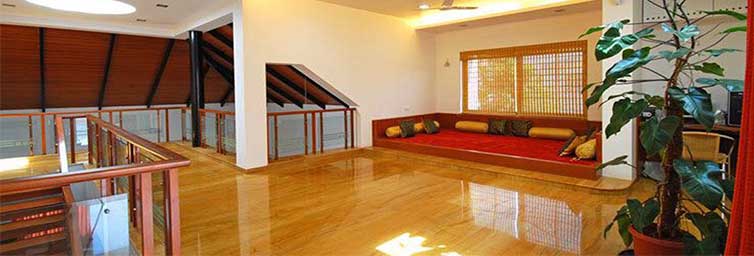










Muniraahuja
posted on Dec 15, 2020 10:12:47 AM